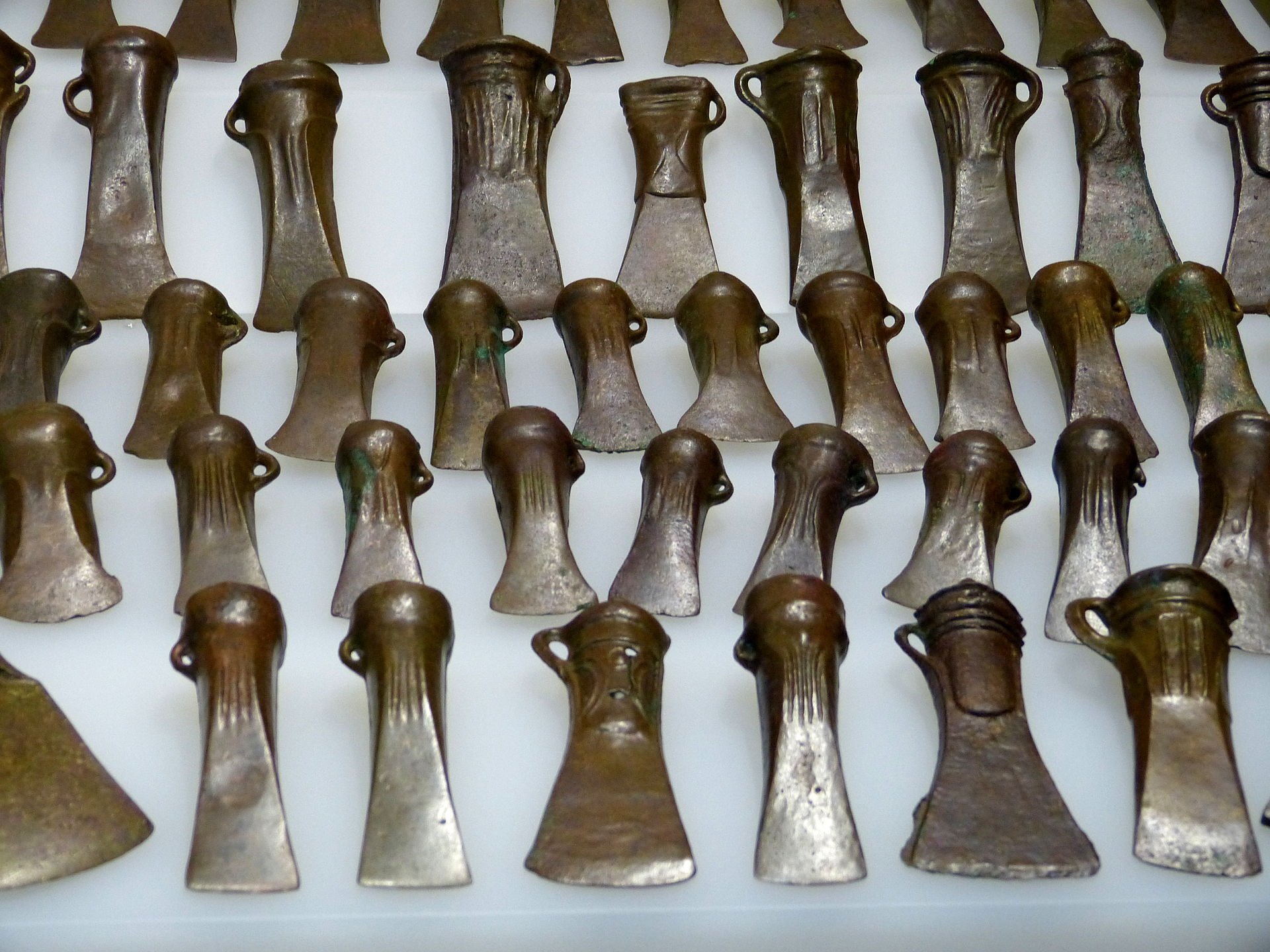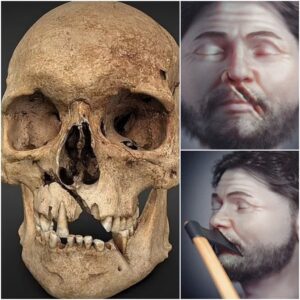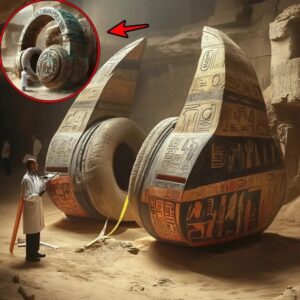BY DIMOSTHENIS VASILOUDIS
The succession of the Five Human Generations in Hesiod’s “Works and Days”: Correspondence of the mythological narrative with the metallurgical developments in Greece and the wider area?
The history of metallurgy is directly linked to the evolution of man. The technological and cultural developments in Greek mainland and the wider area of southeastern Europe and the eastern Mediterranean associated with metallurgy may have left their echo in the traditions and myths that survived until historical times, according to several modern scholars of ancient Greek literature. The transformation of precious metals into impressive objects of prestige, power, and religious symbolism made a special impression on prehistoric people, and it is quite logical that these innovations left their traces in timeless traditions. A mythological narrative that shows a remarkable temporal parallel with these developments is the succession of human genera in Hesiod’s work, “Works and Days” (the Golden Age, the Silver Age, the Bronze Age, the Age of Heroes, and the Iron Age).
The ancient Greek poet Hesiod, in his work “Works and Days,” presents us with a remarkable chronology of humanity’s development. His account, rooted deeply in mythological narratives, describes the succession of five human generations. As intriguing as the narrative itself is the speculated correspondence of this progression with the metallurgical developments, This article will delve into the layers of Hesiod’s anthropogonic myth, tracing the intricate connection with the era’s technological advancements in metallurgy.
The Age of Gold
Hesiod’s first age of man, the Golden Age, was an era of abundance, peace, and prosperity. Humans lived in harmony with the gods; their lives were filled with joy and devoid of toil. This age aligns with the Greek Neolithic era, a period marked by the crafting of gold artifacts. The use of gold in this epoch was mainly symbolic, signifying wealth, power, and divine favor, reflecting the harmony between gods and men in Hesiod’s golden age.
The heyday of Balkan gold metallurgy occurred during the 5th millennium BC. According to the archaeological data, it is probably reflected in the time-compressed “golden age” of the “Golden Generation”, the starting point of the human species according to Hesiod’s myth (which, as we now know from natural anthropology, took place several million years ago).

The Age of Silver
In the Silver Age, Hesiod’s narrative darkens. Humans in this era lived as children for a hundred years, under the dominion of their mothers. When they grew up, their short-lived maturity was marked by strife and ignorance. The silver generation refused to worship the gods, resulting in Zeus destroying them.
Historically, the progression to the use of silver in the Aegean area marks a shift in technological and cultural development. The shift might parallel Hesiod’s mythological narrative’s movement towards strife and ignorance. The silver artifacts found from this era are often associated with burial practices, symbolizing a shift towards mortality’s acknowledgment, reminiscent of the harsh punishment faced by Hesiod’s silver generation.
Silversmithing, another metallurgical manifestation that extends chronologically to the beginning of the 3rd millennium BC, knew its heyday in the innovative Aegean with the highly symbolic ring-shaped periaptas, possibly capturing their meaning as a memory in the collective ideology of the people of that time of the era. This development seems to have been erased in the era of the “Silver Generation,” which was destroyed for its impiety with the so-called Ogygus Flood, an old mythological story etched deep in the memory of humanity that is also compressed in time.
The Age of Bronze
The next era, that of the “Bronze Age”, is undoubtedly associated with a new important innovation, that of the copper-tin alloy (bronze), which is concentrated in time from the 3rd millennium BC. and gave the conventional name to the research of the so-called “Bronze Age”. According to the myth, Zeus created the people of this Generation from ashes. Their armor was forged from copper, as were their houses and tools.
The Bronze Age in Hesiod’s sequence represents a time of warriors. These men, made from ash trees, were strong and formidable. They lived by the sword and ultimately fell by it. Their end was violent, and their passage to Hades was without honor.
Historically, the Bronze Age marked a significant technological breakthrough in metallurgy. The advent of bronze tools and weapons revolutionized societies, leading to the growth of trade networks and facilitating the rise of complex civilizations. Yet it was also an age marked by territorial conflicts and warfare, echoing the violent nature of Hesiod’s Bronze Age men.

The Age of Heroes
This age, unique to Hesiod’s narrative, is an intermediary period, the age of heroes and demigods. These individuals were nobler and more righteous, living in the time of legendary heroic exploits. This era doesn’t have a direct metallurgical association but might symbolize a period of cultural and social transition, marked by the Homeric tales’ heroic deeds.
The “Age of Heroes” is the only generation that does not correspond to any metal. It is also the only one more brilliant than the generation it succeeds. To this generation belonged the so-called Heroes of mythology, such as the Heroes of the Homeric Epics, the Argonauts, Theseus, and others. Its identification with the Bronze Age is also logical. According to experts, this generation of people summarizes a long memory horizon of past human achievements that do not necessarily have a chronological sequence between them.
The Age of Iron
The Iron Age, according to Hesiod, is the current and last generation of men. It is a time of toil, strife, and decay, where virtue is rare and injustice prevails. This pessimistic portrayal reflects the turmoil and upheavals during the Greek Dark Ages, when iron started being widely used. Iron, being common and prone to rust, can symbolize the deterioration of moral values and the hardship of life during this time.
Hesiod, like all his contemporaries, belongs to the “Iron Generation”. People of this generation are also hardy but live a sad existence full of toil, drudgery, and misery without any moral principle. During this generation, Pygmy Law applies. Babies will be born with gray hair, and the gods will have completely abandoned humanity. In archaeology, the Iron Age refers to that period of history when people used iron to make tools and weapons. The adoption of this material coincided with other changes in past societies in terms of cultural methods, religious beliefs, and artistic style, which affected the economic, social, and possibly spiritual development of the era.

The mythical succession of the five generations in Hesiod’s “Works and Days” presents a remarkable parallel to the metallurgical advancements on the Greek mainland and in the wider region. The narrative can be seen as an allegorical representation of the socio-cultural transformations during these periods. However, one must remember that while the similarities are compelling, the allegory is not an exact historical account. It instead shows how ancient Greeks may have conceptualized and rationalized their past, drawing from the material culture they knew and the mythological narratives they believed in.






